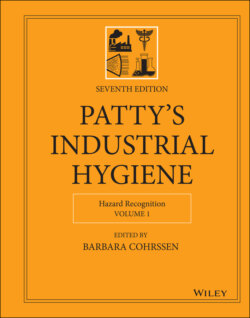Читать книгу Patty's Industrial Hygiene, Hazard Recognition - Группа авторов - Страница 24
2.9 The Twenty‐First Century
ОглавлениеAmerican labor changed dramatically during the twentieth century. In the early 1900s, approximately 38% of the labor force was made up of people working on farms. However, by the end of the century, this figure declined to less than 3%. During this time, the service industry was the growth sector, jumping from 31% of the workforce in 1900 to 78% in 1999 (54).
This trend has continued into the twenty‐first century. The workforce which used to be in farming/manufacturing is now mainly in the service industry. Education has also evolved from in‐class learning using textbooks to a diverse learning environment that uses practical training and distance learning tools.
Jobs in the twenty‐first century can be divided into three categories (shown in Figure 1), i.e. service, manufacturing, and education. Based on a report by the US Bureau of Labor Statistics in 2001, the top 10 fastest‐growing industries from 2000 to 2010 included the computer and data processing sector which was projected to increase by 86%, while overall employment was projected to grow by only 15% (55). In addition to the computer and data processing sector, the fastest‐growing industries include residential care with a projected 64% increase, health services with a projected 57% increase, cable and pay television services with a 51% increase, personnel supply services with a 49% increase, warehousing and storage with a 45% increase, water and sanitation with a 45% increase, miscellaneous business services with a 44% increase, miscellaneous equipment rental and leasing with a 42% increase, and management and public relations with a 42% increase (55). These top 10 projected fastest‐growing industries all relate to the service industry.
FIGURE 1 Industrial hygienists in the workforce.
The changes within industries and their operating businesses in the early twenty‐first century have resulted in a shift in the skills required for industrial hygienists, often called occupational hygienists. Examples of these changes in the three categories are further discussed.
